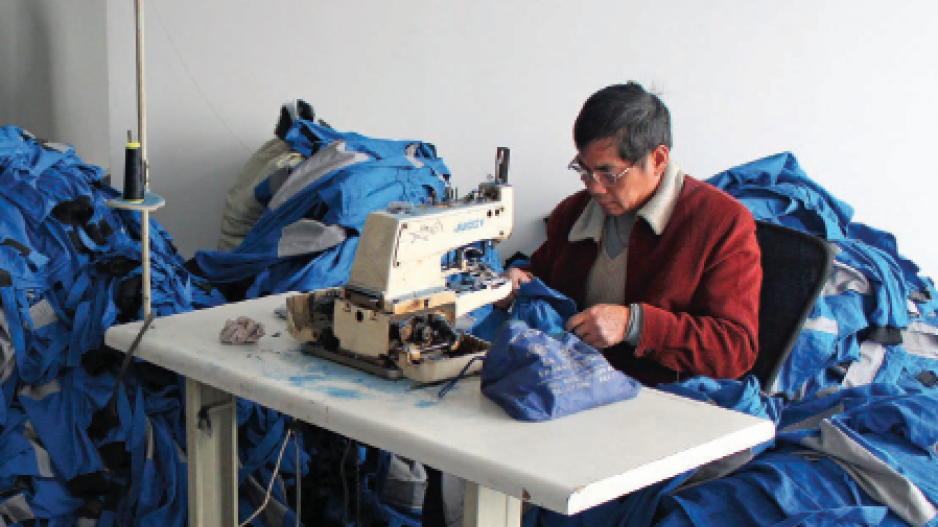In a swift and sharp reversal of fortunes, China has swung from being the land of opportunity to the economic sick man of Asia.
China’s rapid decline in competitiveness as a manufacturing centre is being displayed both in market analysis and in the number of domestic and foreign investors who are looking elsewhere to establish their factories.
The shift is not confined to China. Other emerging economies, such as Brazil, which only a few years ago were seen as being dominant global manufacturing centres for the foreseeable future, have dropped like stones.
At the same time, countries like the United States, Britain and, indeed, Canada, which in the last 20 years or so have been sidelined as too expensive to be profitable, are suddenly looking attractive again.
A significant element in the new productivity picture is energy costs. For Canada and British Columbia, this raises the question of whether it is wise to encourage the export of natural gas and petroleum, and, indeed, other resources such as raw logs. The picture emerging is that industries will move to jurisdictions with attractive and balanced productivity costs. Labour costs are only part of that equation.
A new report by the Boston Consulting Group (BCG) says that wages adjusted for productivity have tripled in China in the last decade. Mexico is now a cheaper manufacturing centre than both China and Brazil. Brazil is now a far more expensive manufacturing centre than the U.S., Canada or Britain.
Factories in China are now only slightly more economical than those in the U.S., according to the BCG’s calculations, based on half a dozen factors in manufacturing costs. China sits at 96 on the BCG’s index, Canada at 115, the U.S. at 100, Mexico at 91 and Brazil at a whopping 123. Australia has the dubious distinction of being the world’s most expensive manufacturing centre, coming in at 130 on the BCG index.
There are two main reasons for China’s declining competitiveness. Rising wages have exposed the deplorable levels of productivity among Chinese workers and manufacturing systems. More systemic is the state control of the energy sector and its milking of the system for inflated profits. This is unlikely to change while China remains a one-party state and the Communist Party insists on keeping monopolistic control of what it sees as critical strategic sectors, under which electricity costs in China have risen by 66% and natural gas costs by 138% in the past decade.
The upshot is capital and investment flight from China. Undoubtedly, an influence is the prospect of the creation of the 12-member Trans-Pacific Partnership (TPP) free trade zone, from which China is excluded. Chinese businesses and those operating in China don’t want to be caught wrong-footed when the TPP – or a trimmed-down version – comes into being. They want to be inside the free trade zone fence. So we are seeing sights unimaginable only a few years ago, such as Chinese textile companies setting up operations in the U.S. cotton-growing state of South Carolina. Until now, South Carolina has exported its cotton to China for working into textiles. But several Chinese companies see production at home becoming increasingly unprofitable as costs mount. They reckon it is more and more attractive to set up their textile mills at the place where the cotton is grown, the productivity is high and the tax breaks are seductive.
Foxconn, the Taiwan-owned electronics contract manufacturer whose products include BlackBerry, iPad, iPhone and Kindle, employs over one million people, most of them at factories in China. The company is perhaps the most high-profile operator in China seeking more cost-effective manufacturing centres and is moving to get a firm footing in more attractive jurisdictions like India and Indonesia. •
China’s economic numbers don’t add up
There is an old joke among Communist Party of China officials that “numbers make cadres and cadres make numbers.”
Other numbers published by the National Bureau of Statistics tell a different story, however. These show that at the beginning of August, rail freight was down year-on-year by 10.1%, trade volume was down 6.9%, exports tumbled 8.3% in July over the previous month, construction starts were down 15.8% and steel production was down 1.3% – the first drop in 20 years.
Jonathan Manthorpe ([email protected]) has been an international affairs columnist for nearly 40 years.




